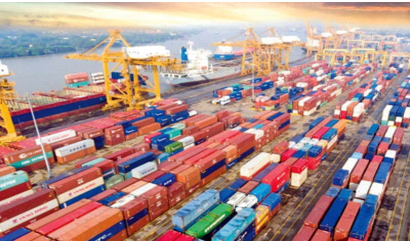آئی این پی ویلتھ پی کے
Qudsia Bano
Pakistan’s growing trade imbalance with neighbouring countries is not just a matter of numbers but a result of policy misalignment and structural inefficiencies, say industry experts, while talking to WealthPK.

While trade volumes with regional partners have increased, a sharp rise in imports compared to a sluggish export performance points to deeper economic challenges. Zulfiqar Ali Ghuman, Director of Trade Policy at the Lahore Chamber of Commerce and Industry (LCCI), said that the persistent trade deficit reflects Pakistan’s inability to develop competitive export sectors.
“We are stuck exporting low-value items while heavily depending on imported raw materials, machinery, and even basic goods. Without a shift towards value-added production and consistent export policies, we’ll keep facing this imbalance,” he told WealthPK.
Farzana Mushtaq, General Manager at Pak Textiles Pvt Ltd, Faisalabad, said the exporters are burdened by logistics issues, unstable government policies, and high input costs. “Our products cannot compete regionally under these conditions. Pakistan needs to negotiate smarter trade agreements and give its exporters better market access and infrastructure support,” she said.
According to data released by the State Bank of Pakistan, the country’s exports to seven regional nations - China, Afghanistan, Bangladesh, Sri Lanka, Nepal, Bhutan, and the Maldives - totalled $4.085 billion during the first eleven months of the 2024-25 fiscal year. This marks only a 1% increase from the same period last year and accounts for just 13.75% of Pakistan’s total exports, which reached $29.69 billion.
China remained Pakistan’s top regional export destination, but sales dropped significantly by over 11% from $2.55 billion to $2.27 billion. Meanwhile, exports to Afghanistan jumped to $723 million from $511 million, and shipments to Bangladesh rose by 21.45% to $728 million. Exports to Sri Lanka and India, however, fell, with India receiving just $0.4 million worth of goods, a sharp drop from $3.4 million the previous year.
In stark contrast, Pakistan’s imports from these regional countries surged by 22.5%, hitting $15.26 billion. Imports from China alone reached $14.89 billion, up from $12.14 billion. Other countries, such as Afghanistan, Bangladesh, and Sri Lanka, also expanded their exports to Pakistan.
Experts argue that unless Pakistan strengthens its industrial base, improves trade terms, and supports exporters through structural reforms, the regional trade gap will continue to widen, leaving the country even more dependent on imports to meet its economic needs.
Credit: INP-WealthPk





